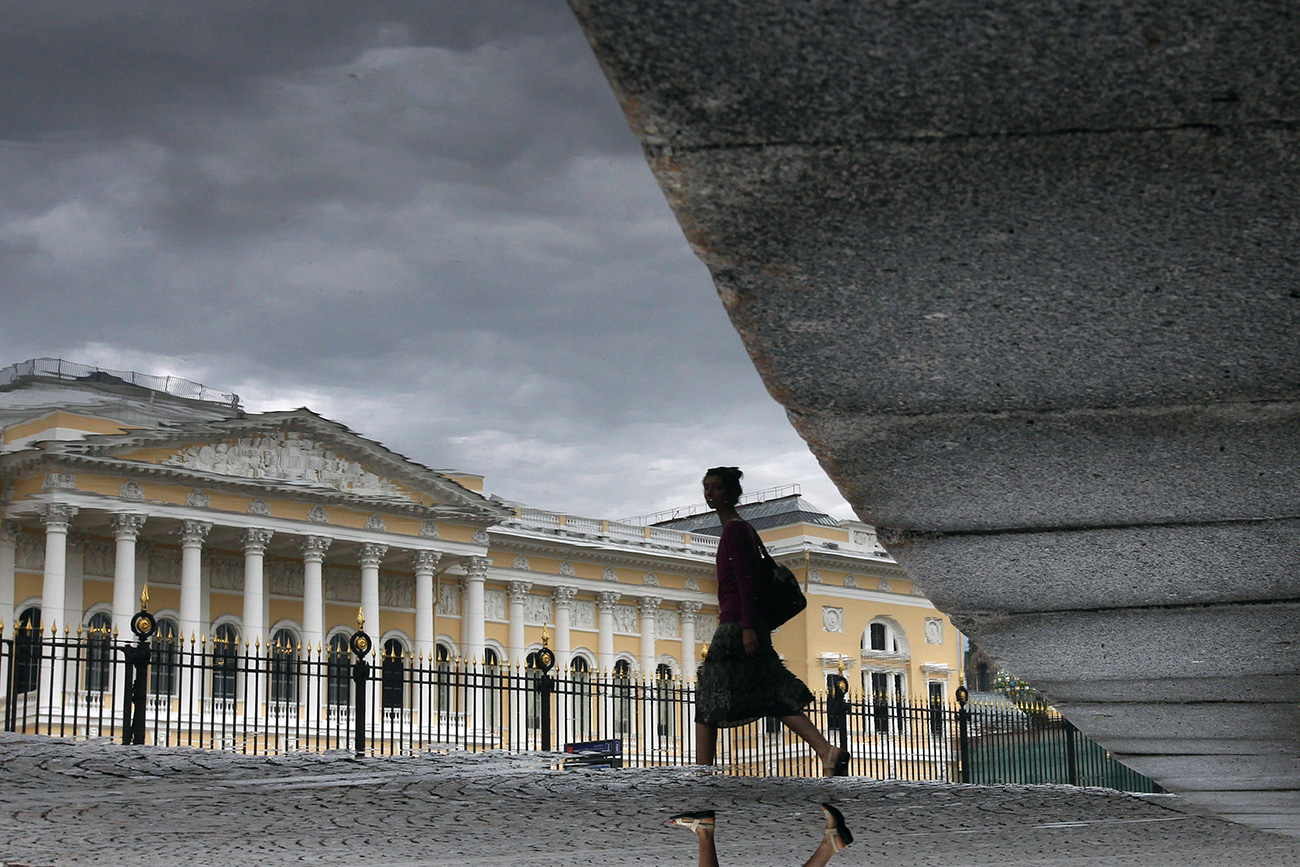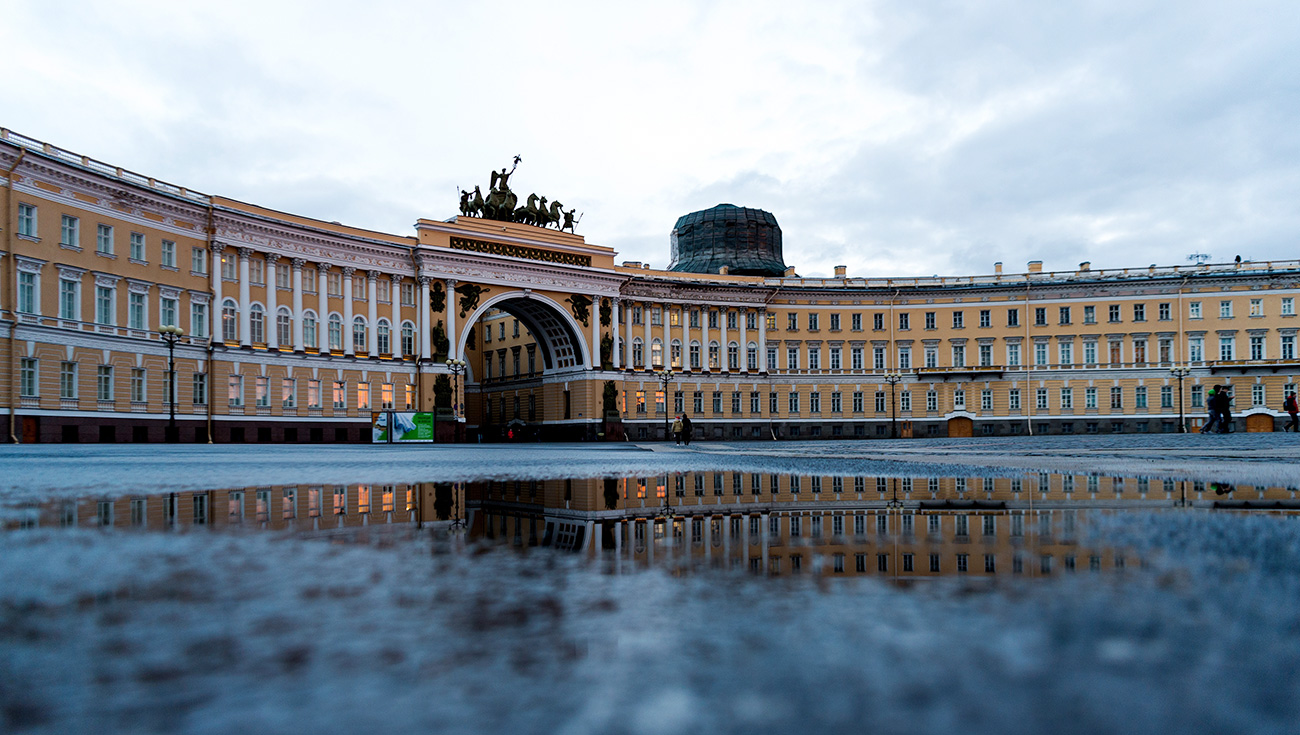What's life like in St. Petersburg? Famous locals share their experiences
St. Petersburg is a dream for tourists from around the world. They hope to see this mystical and extraordinary city inspired by Amsterdam and Venice and built on marshes by the will of Peter the Great. But what is it like living in the city of three revolutions? RBTH selected some vivid excerpts from stories told by native Petersburgers and published in the book, Living in Piter, by Elena Shubina Edition.
Elizaveta Boyarskaya, theater and film actress
Living in Piter
 The Russian Museum in St. Petersburg. Source: Reuters
The Russian Museum in St. Petersburg. Source: Reuters
As my neighbor across the Moika River wrote (poet Alexander Pushkin - RBTH): "At a young age she liked novels/ They replaced everything for her/ She fell in love with lies/ Both Richardson's and Rousseau's."
I don't claim to be Tatyana, and when I was 12 I still didn't even know Rousseau, but Onegin's stanzas showed me my city in a special way, and that is how in my imagination (or on the contrary, my youthful reality) I saw the grand city of Petersburg.
I dreamt of ballrooms, went to lectures at the Hermitage Museum and dances at the Anichkov Palace, strolled along the Palace Embankment, listened to waltzes and polonaises in my headphones, and "imagined the heroines of my favorite authors." And all this in secret. I’d have been horribly ashamed if I was caught reveling in such "refined" Romanticism.
My Petersburg "changed color" in a natural way. Suddenly, it became fatal and mystical after reading The Queen of Spades…. Authoritarian, autocratic and helpless before nature and before the government after reading The Bronze Horseman… cruel, deceitful and duplicitous after The Stationmaster … and so on.
Pushkin generously instilled his protagonist, Petersburg, with the most diverse qualities. And with each new work or episode I’d associate a certain place, street and lane. By far not everything coincided with the author's description: this was my vision, subordinated to an avid imagination.
It was the same with Gogol and obviously Dostoevsky. I discovered the new, gloomy, suffocating and malodorous world of Sennaya Square and all the streets flowing out of it towards the opposite side of Nevsky Prospect: Podyacheskiye, Gorokhovaya, Malaya Meschanskaya, Ekaterininskky Canal…
 General Staff Building, view from the Palace Square, St. Petersburg. Source: DPA/Global Look Press
General Staff Building, view from the Palace Square, St. Petersburg. Source: DPA/Global Look Press
Obviously in reality you cannot use those epithets for this neighborhood, but the world that Dostoevsky created - one of grayness, fog, stuffiness, filth, poverty, the lower depths - invaded my consciousness and stupefied me to such a degree that still today everything "to the right" of Sennaya is Dostoevsky's Petersburg. And when I'm in a certain mood, I really want to take a walk there.
When I was in school I loved zigzagging along the places where Dostoevsky's protagonists lived and often walked those 730 steps from the gates of Raskolnikov's building to the place where the old usurer lived (104 Griboedov Canal). Then, the assigned reading in school helped me discover the Petersburg of Akhmatova, Mandelshtam, Blok, Brodsky, Dovlatov, and so on and so forth.
Obviously, back then I was terribly ashamed of my fantasizing habits. But now I really enjoy walking in the city and being able to travel to various epochs, places and circumstances. A whole chain of different thoughts and considerations appears unwittingly, and it’s always fascinating to compare my earlier impressions and perceptions with those I have today.
I walk around and see, for example, that in a certain house during the Siege of Leningrad Olga Berggolts visited Anna Akhmatova. In that other one, I imagine how Anna Karenina lived with her family, or here is where Onegin is running away after giving his explanation to Tatyana, or here in the Stray Dog Cellar during the Silver Age the intellectual elite would gather… Thus, alone with your thoughts, you can walk around for a long while.
Valery Popov, author, screenwriter, Chairman of the St. Petersburg Union of Writers
My places
 The Anichkov Bridge over the Fontanka River, St. Petersburg. Source: Getty Images
The Anichkov Bridge over the Fontanka River, St. Petersburg. Source: Getty Images
How many inspiring places are there on Nevsky Prospect! Take Anichkov Bridge, for example. On one side, as Dostoevsky confessed, he experienced the happiest moment in his life when he left Belinsky's home (an important 19th century literary critic) after being praised.
I experienced my happiest moment on the other side of the bridge, by the Writer's Bookstand, when I heard a beautiful girl reading out loud to her boyfriend an amusing story from my first book and how both were laughing.
Another happy moment was when my friend and I set sail on a motorboat and we felt that we ruled over the city's waterways. This is the Piter that we discovered! Modern and historical. We would approach shabby palaces not well known at the time and therefore particularly mysterious: for example, the Bobrinsky Palace, which belonged to the son Catherine the Great had out of wedlock. We would also dock at New Holland, although there was a military unit there. But we got out and bathed anyway.
 An angel, fixed atop a spire of the Saints Peter and Paul Cathedral in St.Petersburg. Source: AP
An angel, fixed atop a spire of the Saints Peter and Paul Cathedral in St.Petersburg. Source: AP
Or we just raced down the Neva, leaping over the waves! Or we’d set up camp at the Peter and Paul Fortress for a whole week, living a completely new life! Freedom! Happiness is living in our city. You just need to catch it and never let go. I wrote about it in Mad Navigation.
Today, the city is clean and beautiful. Perhaps it’s too neat: there are no mysterious, abandoned places to captivate you like before. The public is nice and calm… maybe a bit too calm. There's not enough fire. Young people look more into their mobile phones than at each other. There are no popular places where your crew gets together, but it’s precisely in such places that culture is created. It was like this in the Stray Dog Cellar during the Silver Age.
Well, the city educates its inhabitants. Moscow has its upscale crowd; but we have the promenade. It's such a pleasure to walk out of the Moskovskiy Train Station and walk down Nevsky Prospect. You reach the Palace Embankment, breath in the air of the Neva River, and all your stress disappears!
If using any of Russia Beyond's content, partly or in full, always provide an active hyperlink to the original material.
Subscribe
to our newsletter!
Get the week's best stories straight to your inbox
